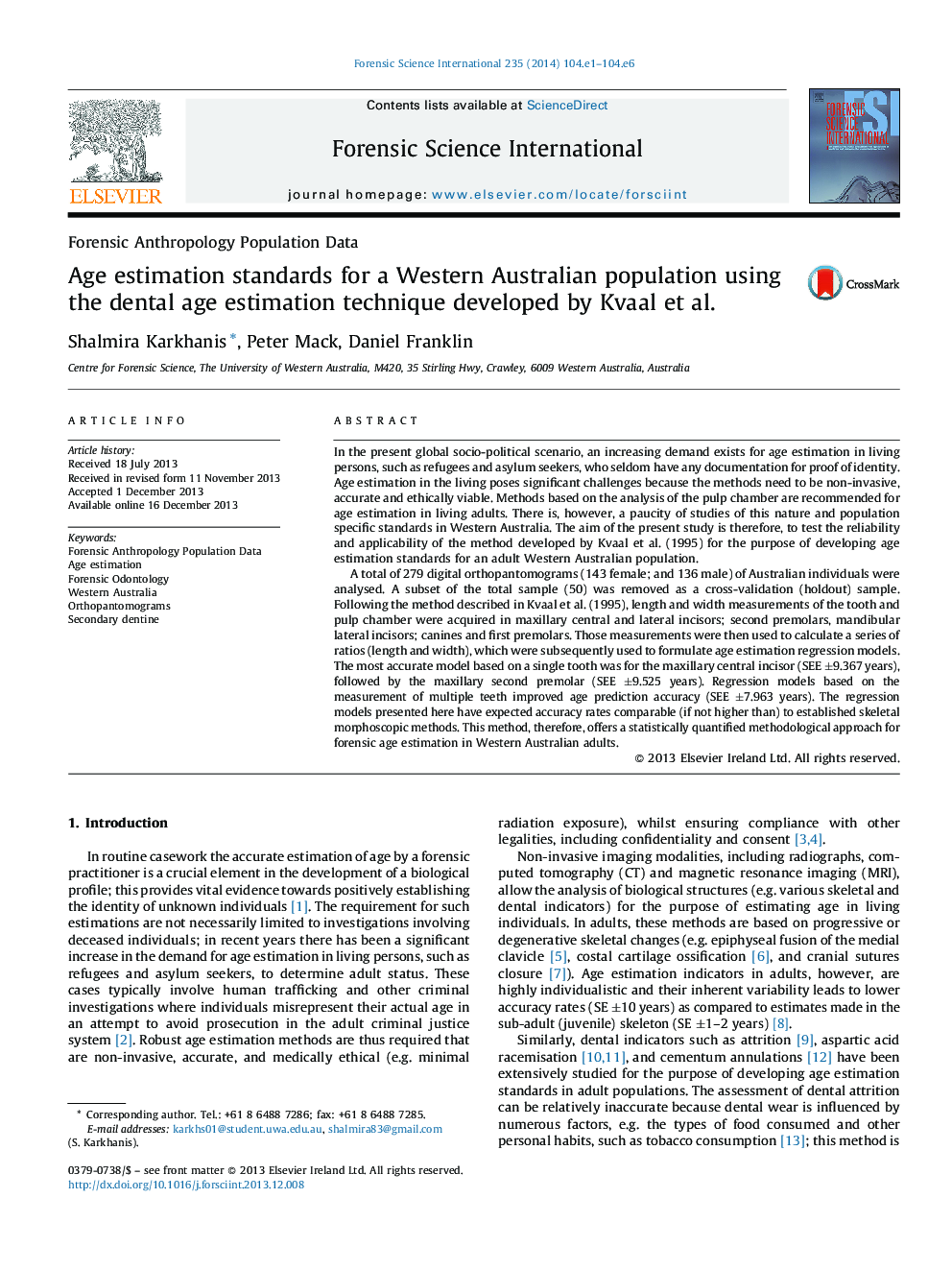| Article ID | Journal | Published Year | Pages | File Type |
|---|---|---|---|---|
| 95902 | Forensic Science International | 2014 | 6 Pages |
Abstract
A total of 279 digital orthopantomograms (143 female; and 136 male) of Australian individuals were analysed. A subset of the total sample (50) was removed as a cross-validation (holdout) sample. Following the method described in Kvaal et al. (1995), length and width measurements of the tooth and pulp chamber were acquired in maxillary central and lateral incisors; second premolars, mandibular lateral incisors; canines and first premolars. Those measurements were then used to calculate a series of ratios (length and width), which were subsequently used to formulate age estimation regression models. The most accurate model based on a single tooth was for the maxillary central incisor (SEE ±9.367 years), followed by the maxillary second premolar (SEE ±9.525 years). Regression models based on the measurement of multiple teeth improved age prediction accuracy (SEE ±7.963 years). The regression models presented here have expected accuracy rates comparable (if not higher than) to established skeletal morphoscopic methods. This method, therefore, offers a statistically quantified methodological approach for forensic age estimation in Western Australian adults.
Keywords
Related Topics
Physical Sciences and Engineering
Chemistry
Analytical Chemistry
Authors
Shalmira Karkhanis, Peter Mack, Daniel Franklin,
